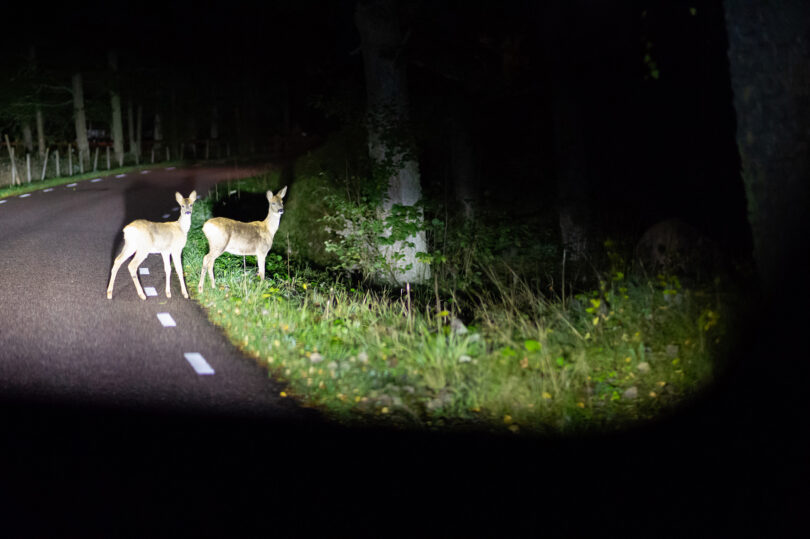Shedding light on night drives
A new study delves into factors that impact detecting wildlife after dark
By Katrina M. Ford

According to a 2008 study, wildlife-vehicle collisions cost an estimated $8.4 billion in damages, with more than 58,000 people injured and 440 deaths occurring annually. These numbers continue to increase as urban sprawl expands and human-wildlife interactions increase. For many folks, wildlife-vehicle collisions are becoming a part of life. This is especially dangerous with days getting darker earlier.
A recent study conducted at the Savannah River Site by scientists and students from the University of Georgia’s Savannah River Ecology Laboratory sheds light on the ability of drivers to observe animals and avoid dangerous wildlife-vehicle collisions at night safely.
“Our goal was to examine how various animals, drivers and environmental variables influenced drivers’ ability to detect animals at night and avoid collisions. We wanted to better understand why wildlife-vehicle collisions at night are so common,” said Travis DeVault, associate director for research at the University of Georgia’s Savannah River Ecology Laboratory and senior author on this study.
